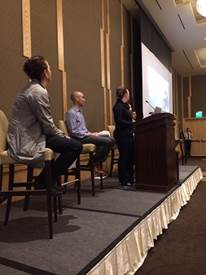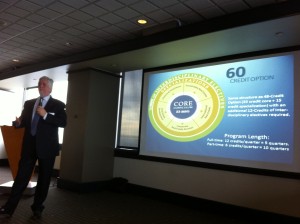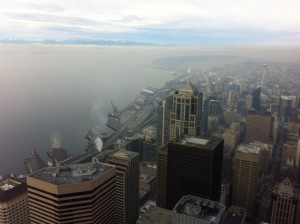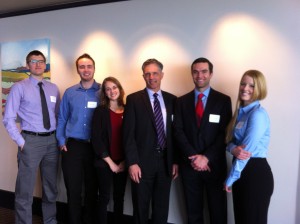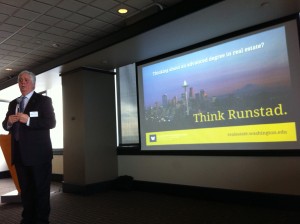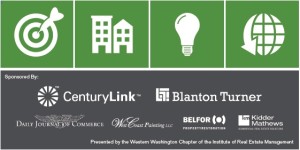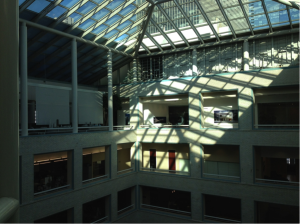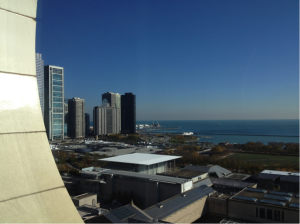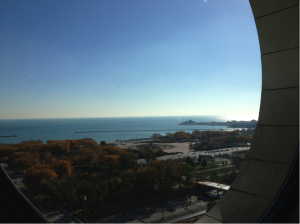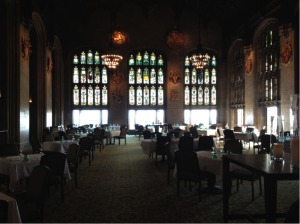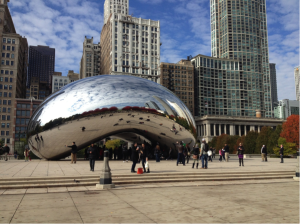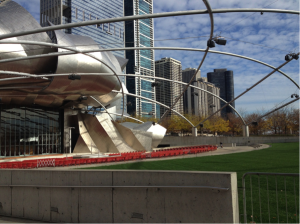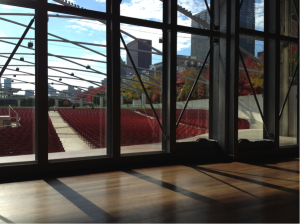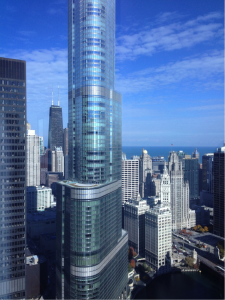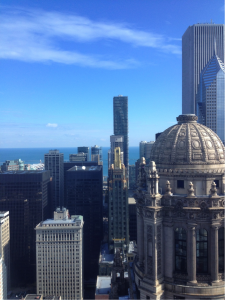At the recent 2013 ULI Fall Meeting in Chicago, second-year Runstad MSRE student Craig Ratchford attended a panel session to learn more about research and discussions surrounding the issues of affordable housing development. He writes in with his impressions of that session, and thoughts about how his MSRE experience has helped him take part in the vital conversation about this real-world dilemma.
• • •
“There is nothing more complicated than affordable housing development in the entire real estate universe.” – Bending the Cost Curve on Affordable Rental Development panel, ULI Fall Meeting, Chicago, 2013
Before entering the MSRE program, I worked for an applied research and consulting organization focused on measuring the impacts of affordable housing policy and community and economic development in urban areas throughout the country. But while learning to understand the impacts is valuable and important, it was frustrating for my inner pragmatist to understand the difficulty in providing quality affordable housing where it was needed most, but remain so far away from influencing its actual development. I entered the MSRE program at the Runstad Center (and the Evans School of Public Affairs) to learn how real estate, finance, and land use economics intersect with public policy to meet this challenge, and, hopefully, pursue a career confronting this ubiquitous problem.
Many smart people at the ULI conference in Chicago were also confronting this problem. The panel session, Bending the Cost Curve on Affordable Rental Development, showcased a joint research effort and roundtable discussions convened by ULI’s Terwilliger Center for Housing and Enterprise Community Partners. Over the past year, they engaged over 100 affordable housing leaders in weak and strong markets across the country, to identify the most important cost drivers in affordable housing development, and develop strategies to “bend” the cost curve towards more efficient and lower cost affordable housing delivery.
Affordable housing delivery is shaped by a number of procedures, regulations, and policies instituted at all levels of the system – each with its own set of costs. But while there is a rich set of literature on specific regulatory barriers to affordability in general, little research has been done to examine how these issues interact with the financing and costs of affordable housing development. Their research intends to fill this gap.
During the session, the group focused on the following cost drivers:
- Project scale: small projects, less intensive projects have high fixed costs
- Project design and construction: higher upfront costs for design and materials are often justified, since the ownership period is typically longer, and limited funding available for future replacement compared to privately financed development requires smart material decisions to reduce future capital investments
- Financing and underwriting: decreased capital market funding competition (compared to market-rate projects) gives investors greater power to dictate terms; deals must be structured around non-financial terms and goals of multiple funders
- Capital availability: developers must often begin to scope a deal prior to assembling financing; capital is scarce for smaller or innovative projects; many investors deal in exclusively market-rate or affordable projects;
- Deal structures: “cost-plus” basis and percentage fees are common, reducing incentives to lower costs; tax credit allocations made years prior hedge risks of cost inflation, and fail to incentive use of anything less than full amount (because the savings reduce the developer fee); strict, increasing reserve requirements, due to higher risks; longer timelines and additional land holding and soft costs, due to project complexity and multiple standards
- Program and investor requirements: timing and fund distribution are often incongruous with projects needs, directly causing additional constructions costs, higher compensation for the uncertainty of extended land contracts, a reduced pool of potential developers; the challenges of tax exempt private activity bonds
- Other costs drivers, include incentives to meet social policy goals, poorly designed cost controls (ironically), and costs imposed by local regulations like parking minimums
The differing levels of complexity result in major discrepancies in affordable project costs nationally –examples included lows in the $100’s, up to $500,000 per door in San Francisco.
The session focused mainly on exhaustively identifying the problems. The next research phase intends to produce specific, actionable recommendations for lowering costs in the face of these barriers, with a report expected in the winter of 2014.
The session was interactive. The panel surveyed the audience, to identify their concerns and try to field questions. The back-and-forth between the panel and the audience revealed a very important lesson I hadn’t expected: nobody knows the right answers yet. We’re all exploring. I expected to walk in and learn about bold new plans and strategies professionals used to finance and build affordable housing that were previously off my radar. But it became clear – through this session and in other ULI panels – that there are not simple answers simply waiting to be learned and deployed. Despite years of experience, everyone continues to confront the same challenges and perpetually invent and deploy new strategies. It really is up to us to invent, test, and discover the next generation of affordable housing solutions.
And furthermore, while the panel compiled and succinctly defined the issues and ideas, and certainly helped sort out my thinking, it was no longer new knowledge after a year in the program. Many of the problems had been explored in coursework and resources of the MSRE program – my program experience had taught me the right questions to ask (and often with more nuance than many were addressed during the panel). The professionals in the room, with years more experience, were grappling with the same questions I was. To know that I was on my way to understanding the implications of real-world dilemmas really validated the work my classmates and I had been doing in MSRE.
